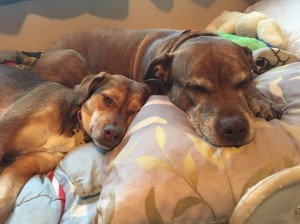-
Recent Posts
Archives
- October 2022
- August 2022
- May 2022
- March 2022
- January 2022
- December 2021
- September 2021
- July 2021
- June 2021
- May 2021
- April 2021
- February 2021
- January 2021
- November 2020
- October 2020
- September 2020
- June 2020
- April 2020
- March 2020
- February 2020
- January 2020
- December 2019
- November 2019
- October 2019
- September 2019
- June 2019
- March 2019
- February 2019
- January 2019
- December 2018
- November 2018
- October 2018
- August 2018
- July 2018
- June 2018
- May 2018
- April 2018
- March 2018
- February 2018
- January 2018
- December 2017
- November 2017
- October 2017
- September 2017
- August 2017
- July 2017
- June 2017
- May 2017
- April 2017
- March 2017
- February 2017
- January 2017
- December 2016
- November 2016
- August 2016
- July 2016
- June 2016
- May 2016
- April 2016
- March 2016
- February 2016
- January 2016
- December 2015
- November 2015
- October 2015
- September 2015
- August 2015
- July 2015
- June 2015
- May 2015
- April 2015
- March 2015
- December 2014
- June 2014
- May 2014
- April 2014
- November 2013
- September 2013
- August 2013
- July 2013
- June 2013
- May 2013
- March 2013
- January 2013
- November 2012
- October 2012
- July 2012
- December 2011
- November 2011
- October 2011
- September 2011
- August 2011
- July 2011
- June 2011
- May 2011
- April 2011
- March 2011
- February 2011
- January 2011
- December 2010
- November 2010
Categories
Anxiety-Based Aggression Among Dogs at Home
When Duchess and Bambi first came to the NorthStar VETS Behavior Service, their owner, Jen, wasn’t sure if she would be able to keep both of her girls. Although the two dogs had occasional fights since they were each adopted 2 years earlier, recently their fighting had gotten to the point where Jen was beginning to worry about their safety and the safety of her young son. The other pets and people in the house were all walking on eggshells in response to the tension between the two dogs.
First Visit
When Duchess and Bambi first came to see me, they were still recovering from their last fight. That fight was especially scary because it happened at night, in the dark when Jen invited Bambi to join her and her son and the other pets, including Duchess, in the bed. Not only were both dogs injured, but when Jen’s husband reached in to separate the dogs, he was bitten. Other fights had happened when the dogs got excited about having their harnesses put on before walks, on the stairs when one dog was going up and the other was going down, when putting new collars on the dogs and when trying to clean off Duchess’ backside.
The thought of rehoming either one of the dogs was heartbreaking to the family. Not only did the people in the house love Bambi and Duchess, but the two dogs really did like each other. Between fights, they played with each other and could often be found sleeping curled up together. When Jen tried separating the dogs to prevent fights, they would start to miss each other.
When I met Duchess and Bambi, I quickly realized that they were both sweet, but anxious dogs. Bambi was somewhat afraid of strangers and would also get worried and react if her owners tried to tend to her injuries or if there were problems putting on her harness. Duchess would get anxious as well when Bambi was getting worried about these things, and she was uncomfortable about being touched by people or dogs from behind.
At our first meeting, Jen was given a treatment plan that included recommendations on how to avoid situations that could make either dog anxious, including trying to have them sleep in crates rather than on people beds. Additionally, we discussed how to safely break up dog fights, should another fight occur. We also talked about doing some training with the dogs so Jen, her husband and even her son could have ways to redirect the dogs’ attention away from each other or things that make them anxious. In addition, Bambi was started on a medication to lower her anxiety. Bambi was worried about many different things and her anxiety would feed into Duchess’ anxiety and aggression.
Post-Visit Success
Within a couple of weeks of our initial appointment, Jen was already seeing improvement. Jen reported that “Bambi is a less anxious version of herself.” For the first time, Bambi would go into her crate without screaming and urinating on herself. This meant that the dogs were no longer trying to sleep in peoples’ beds.
 Second Visit
Second Visit
Six weeks after that, Duchess and Bambi came in for a follow up appointment. They were both less anxious at this appointment than the first time we met. At home Bambi was generally less anxious and there had been no more fights. Since Duchess was still showing some anxiety towards Bambi, she was also started on medication after this appointment. We were also able to talk about some specific behavior modification strategies to address the few remaining situations that caused tension between the girls.
Life at Home Today
Three months after the initial consultation, Jen reported that there had been no more fights between the girls. The family are all careful to watch the dogs’ body language and know how to diffuse situations if they seem tense. Bambi continues to be ‘a new dog’ and Duchess is less on edge. They’ve been getting along so much better, that Duchess let Bambi join her to nap on Jen’s son’s bed and pose for this picture!
If your pets have difficulty getting along, contact NorthStar VETS to schedule an appointment with the Behavior service.
Learn more about the Behavior service at NorthStar VETS
 Laurie Bergman, VMD, DACVB
Laurie Bergman, VMD, DACVB
Dr. Laurie Bergman received her VMD from the University of Pennsylvania in 1993. She worked in small animal practice on Cape Cod and completed an internship in Wildlife Medicine and Surgery at Tufts University School of Veterinary Medicine. She began working in behavior practice in 1998 and entered a residency in behavioral medicine at the University of California Davis in 2000. Since becoming a Diplomate of the American College of Veterinary Behaviorists in 2003, Dr. Bergman has worked in academic practice in California and private practice in Pennsylvania.
Dr. Bergman’s interests include pet-family interactions, finding practical approaches to behavior problems and treating behavior problems in birds and exotic pets. Dr. Bergman lives in Pennsylvania with her two human children, senior dog, Riley, Australian Terrier puppy, Ivan, Leopard Gecko, Mo, and Bearded Dragon, Frederick. She competed in agility with her previous Australian Terriers and hopes that Ivan can grow up to be an agility dog, too.
This entry was posted in Pets, Veterinary Medicine and tagged aggression fighting in dogs, fear anxiety in dogs, Laurie VMD, NorthStar VETS, veterinary behavior. Bookmark the permalink.





Leave a Reply